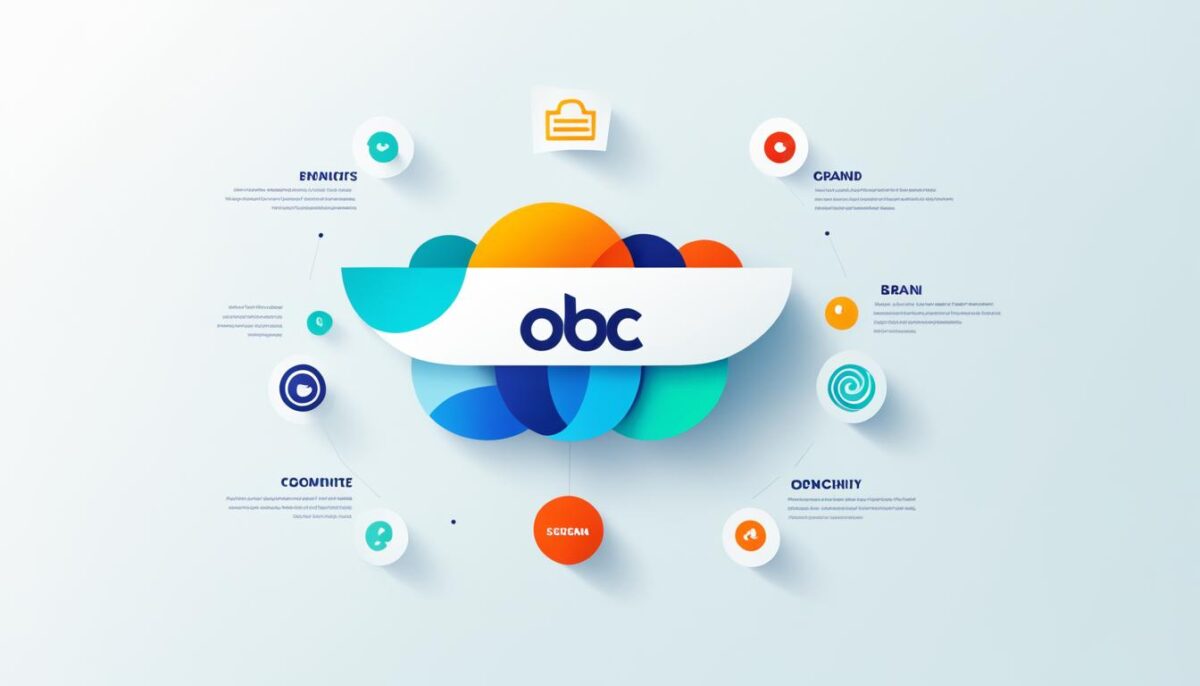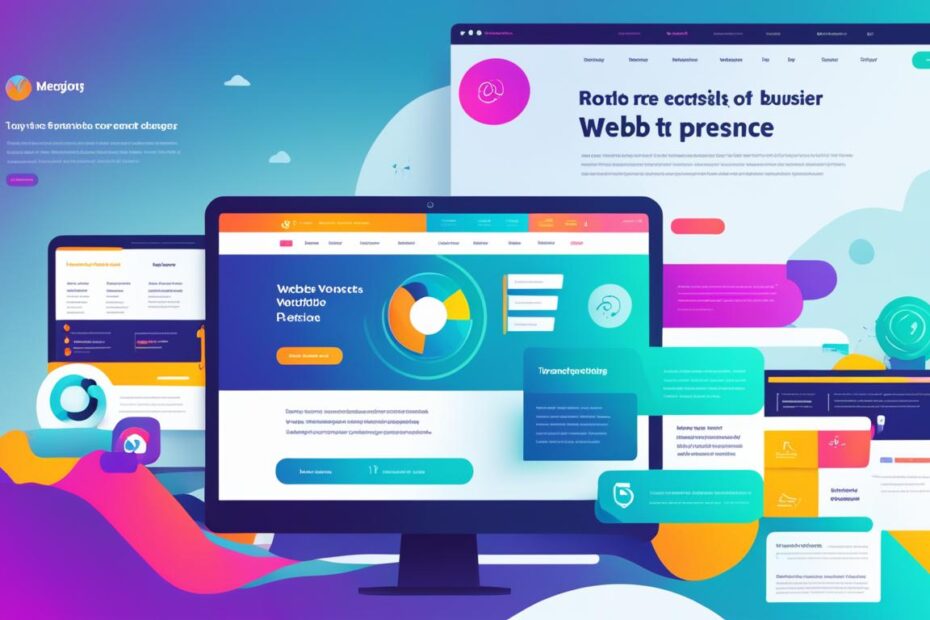Welcome to our article on the importance of web design for online success! In today’s digital age, having an effective web design is essential for businesses to thrive and stand out from the competition. A well-designed website not only creates a positive user experience but also shapes brand perception, making it a crucial investment for any organization.
When it comes to user experience, web design plays a vital role. A user-friendly interface and intuitive navigation can greatly enhance the overall experience for visitors, ensuring they stay longer, engage with the content, and ultimately convert into customers. Responsive design is another crucial aspect that optimizes the website for different devices, ensuring a seamless experience for all users, regardless of screen size or platform.
Speaking of brand perception, web design has a direct impact on how your brand is perceived by your target audience. Visual aesthetics, consistent branding, and cohesive design elements all contribute to creating a positive brand image. A well-designed website instills credibility and trust in your customers, making them more likely to engage with your business.
Effective web design is also essential for achieving online success. A well-optimized website improves performance, leading to higher conversion rates. Implementing search engine optimization (SEO) strategies further enhances visibility, driving organic traffic to your site. In today’s mobile-first world, mobile optimization is key to reaching a wider audience and gaining a competitive advantage in the digital landscape.
In conclusion, web design plays a crucial role in the online success of businesses. By prioritizing effective design, businesses can enhance user experience, shape brand perception, and achieve their goals in the digital realm. So invest in a well-designed website and unlock the potential for growth and success!
Enhancing User Experience with Web Design
When it comes to building a successful online presence, user experience is paramount. Web design plays a crucial role in creating a seamless and enjoyable user journey. By focusing on website design, businesses can enhance user experience and establish a strong connection with their target audience.
One fundamental aspect of web design is the creation of user-friendly interfaces. A well-designed interface prioritizes intuitive navigation, clear information hierarchy, and streamlined interactions. This allows users to easily find what they are looking for and effectively engage with the content on the website.
Responsive design is another important consideration in web design. With the increasing use of mobile devices, it is essential to ensure that websites are optimized for different screen sizes and resolutions. Responsive design guarantees that users have a consistent and satisfactory experience, regardless of the device they are using to access the website.
Furthermore, accessibility is a crucial component of web design. Accessibility refers to the design and development of websites that can be used by individuals with disabilities. By implementing accessible design principles, businesses ensure that their websites are usable by a wider range of users, including those with visual impairments, hearing impairments, or disabilities that affect motor skills.
“A well-designed website considers the diverse needs and preferences of its users. By creating user-friendly interfaces, implementing responsive design, and prioritizing accessibility, businesses can deliver an exceptional user experience that fosters engagement and loyalty.”
— Jane Rodriguez, UX Designer
By prioritizing user experience, website design can significantly impact a brand’s success. User-centric design choices lead to more satisfied and loyal users, increased engagement, and higher conversion rates. Additionally, businesses that invest in user-friendly interfaces, responsive design, and accessibility gain a competitive advantage in today’s digital landscape.
Let’s move on to the next section to explore the impact of web design on brand perception.
Impact of Web Design on Brand Perception
When it comes to creating a strong brand identity online, visual aesthetics and consistent branding play a crucial role. Web design has a significant impact on brand perception, influencing how customers perceive and interact with a business. By focusing on visual elements and consistent branding, businesses can enhance their credibility and build trust among their audience.
Visual aesthetics are the first thing visitors notice when they land on a website. A visually appealing design not only captivates the audience but also communicates the values and personality of the brand. A well-designed website with eye-catching colors, engaging imagery, and intuitive layouts can leave a lasting impression on visitors, creating a positive brand perception. The visual elements of web design, such as font choices, graphic elements, and overall layout, should align with the brand’s identity and convey its unique qualities.
“The visual design of a website is instrumental in shaping the audience’s perception of the brand. It’s like the digital storefront of a business. A visually appealing and well-designed website builds immediate credibility and trust.” – Jane Smith, UX Designer
In addition to visual aesthetics, consistent branding plays a vital role in shaping brand perception. Consistency across all aspects of a brand’s online presence, including the website, logo, color palette, and tone of voice, is essential for creating a cohesive and recognizable brand identity. When users encounter a brand with consistent branding elements, it reinforces the brand’s credibility and professionalism, leading to increased trust and loyalty.
Building Credibility and Trust
A well-designed website not only enhances a brand’s visual appeal but also establishes credibility and fosters trust among its audience. A professional and user-friendly website design signals that a business is reputable and reliable. When visitors navigate through a well-structured and intuitive website, they feel confident in the brand’s ability to deliver quality products or services.
Moreover, a website with consistent branding elements instills trust in the audience. When users see the same color scheme, logo, and messaging across various pages of a website, they perceive the brand as being cohesive and authentic. This consistency reassures customers that the brand is committed to delivering a consistent experience, from the website to the product or service itself.
Investing in web design that focuses on brand perception is essential for businesses looking to establish themselves as credible and trustworthy entities in the digital landscape. By prioritizing visual aesthetics, consistent branding, and user-friendly design, businesses can create a positive brand perception that resonates with their target audience.

| Brand | Visual Aesthetics | Consistent Branding |
|---|---|---|
| Apple | Clean and minimalist design | Consistent use of the apple logo |
| Coca-Cola | Bold and vibrant colors | Consistent use of the Coca-Cola logo |
| Nike | Energetic and dynamic visuals | Consistent use of the Nike swoosh logo |
Achieving Success through Effective Web Design
When it comes to online success, web design plays a crucial role. A well-designed website not only captures the attention of visitors but also influences their decision-making process. One key aspect of web design that directly impacts online success is website performance.
Website performance, including factors like load time and responsiveness, can significantly affect conversion rates. Research shows that a one-second delay in page load time can result in a 7% reduction in conversions. By prioritizing website performance optimization, businesses can ensure a smooth and seamless user experience, ultimately leading to higher conversion rates.
Furthermore, search engine optimization (SEO) is another essential component of effective web design. By implementing SEO best practices, businesses can improve the visibility of their websites in search engine results pages. This drives organic traffic and increases the chances of attracting qualified leads. Investing in SEO-friendly web design helps businesses stay ahead of their competitors and gain a competitive advantage in the digital landscape.
In today’s mobile-dominated world, mobile optimization is no longer optional. With more people using smartphones and tablets to browse the internet, it’s crucial for businesses to have a responsive and mobile-friendly website. Mobile optimization ensures that the website adapts to different screen sizes, providing a seamless browsing experience across devices. By catering to the needs of mobile users, businesses can tap into a vast potential audience and further enhance their online success.
